
Issue #: 12
Published: August / September 2018
- Price per issue - digital : 6.50€Digital magazine
- Access to Multihulls World digital archives Digital archives
Have you taken every precaution when checking your rig? Bravo. But an unexpected break is always a possibility. So how to get out of this bad situation with limited equipment? Here's how to make an eye-splice in a modern fiber rope for express troubleshooting.
If a stay breaks at sea, you might not necessarily be dismasted... In this case, many factors come into play and above all the good (or otherwise) reactions of the skipper. In the event of a breakage you must first secure the mast and the boat. You can tack quickly, or come downwind and secure the mast with halyards. From there, you have avoided the worst. The mast is in place and secure. You have kept a means of propulsion and have reacted well. You still need to intervene to secure the rigging and be able to continue to your destination or the nearest port to make a permanent repair. One of the solutions is to be carrying with you in a locker, replacement shrouds and a forestay which are already prepared, but this represents a significant cost and requires a lot of space. When stowing the cables, you have to pay careful attention to coiling them without generating kinks or folds. To achieve this, know that you must do alternately a loop in one direction then in the other. Single-stranded cable, depending on its diameter requires a fairly large loop (at least 1 meter in diameter for 10 mm) which is not always easy to store.
But a more compact solution exists in the form of new fiber ropes. We hear more and more about fiber rigging in the racing world and also even in the world of (luxury) cruising. These new technologies are quite attractive in terms of weight and stretch, and are constantly evolving. If your terminals are attached to the mast with rigging toggles, they can be a makeshift solution to deal with an emergency, replace a stay, and then continue on your way. A single-strand 10 mm cable can be changed for a 9 mm Marlow Dyneema M-RIG MAX line, maintaining the same minimum breaking strain of approximately 9,000 kg. Its weight of 630 g for 10 meters makes it much more reasonable to carry and it benefits from a protective layer that makes it less sensitive to abrasion and friction. You could carry pre-spliced ropes that will only be fixed at the pin of the fork terminal and at the turnbuckle. Or you could secure with a lashing between the chainplate and the rope using a friction ring. For those of you who want to take a reel of this line along with you to do everything, Christophe from the company APY shows here how to splice it.
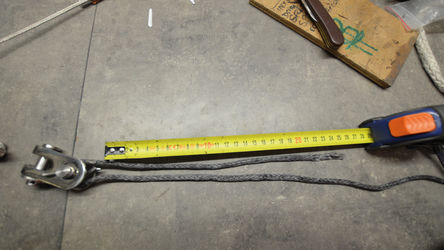
1 - Lay out the rope and measure the return length of the splice. We multiply the diameter of the rope by 5. Here it is 25 cm for a diameter of 5mm. For a rope of 10 mm it will obviously be 50 cm
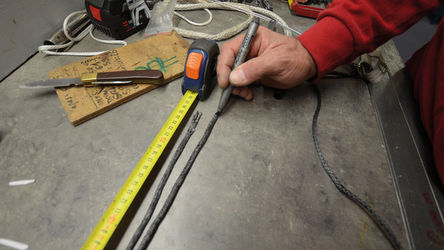
1 b - Mark the rope at the end of splice and also at the point where the eye will begin, to know where to insert the rope past the thimble.
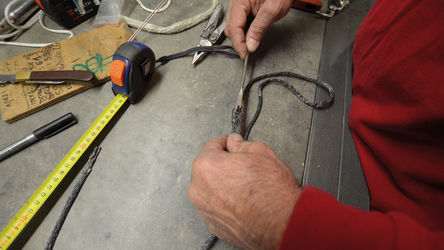
2 - The splicing needle is introduced at the point of the first mark
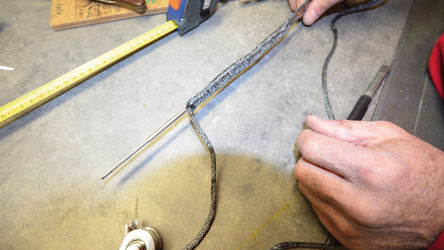
3 - It is retrieved again at the second mark before the eye
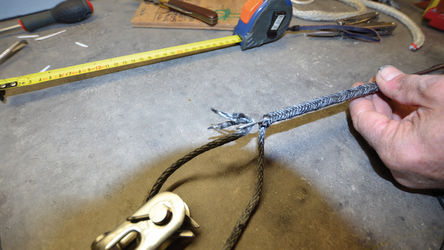
4 - After forming the eye (on a thimble, or around a pin) the other end is drawn through with the aid of the needle at the point of the second mark
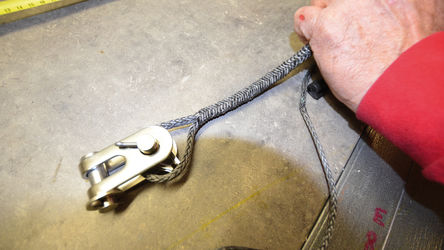
5 - All you need do is pull out the needle, taking care ...
What readers think
Post a comment
No comments to show.